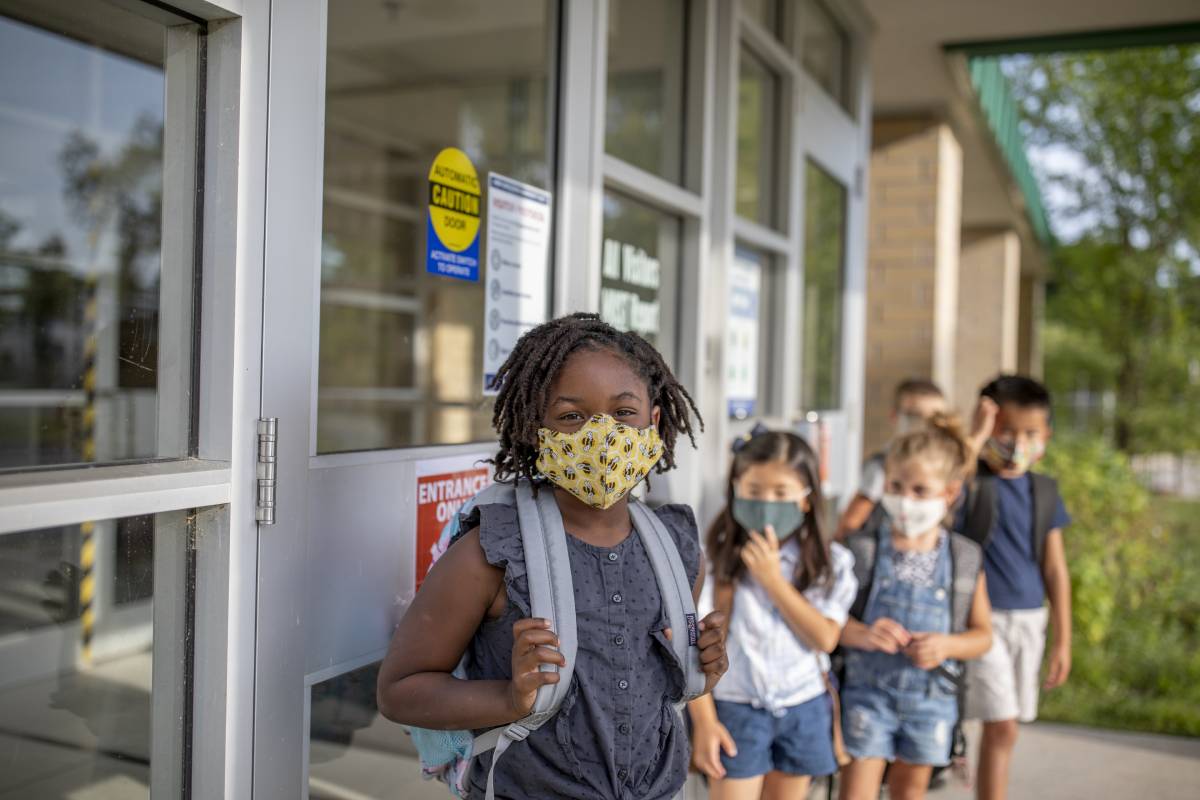
On July 12, 2021, the United Nations Children’s Fund (UNICEF) and United Nations Educational, Scientific and Cultural Organization (UNESCO) jointly released a statement urging governments to reopen in-person school. Primary and secondary schools remain completely shuttered in 19 countries around the world due to COVID-19, increasing the likelihood of learning loss, reduced development of social skills, mental distress, exposure to violence and abuse, and missed school-based meals and vaccinations. Since March of 2020, schools in over 160 countries have been fully closed at one point. “The losses that children and young people will incur from not being in school may never be recouped,” the statement declares. [1]
Over a year into the COVID-19 pandemic, with many schools around the world having cycled through periods of full closure and cautious or complete reopening, there is growing evidence that, in many scenarios, communities can resume in-person school in a safe manner with proper adherence to mitigation strategies. Research has consistently demonstrated that while children and young people are susceptible to COVID-19, they have had a lower incidence and a lower risk of severe COVID-19 outcomes than adults. [2] As of July 8, 2021, between only 0.1 to 1.9 percent of all child COVID-19 cases have resulted in hospitalization. [3]
The Centers for Disease Control and Prevention (CDC) is promoting the reopening of in-person school in accordance with newly released guidelines. A July 9 report recommends indoor masking at all times, at least three feet of distancing, weekly testing, and maintaining small groups/pods. The report promotes, but does not mandate, vaccination for teachers, staff, families, and students. [4] Encouragingly, a July 2021 national polling update from the Morning Consult indicates that nearly three-quarters of teachers have been vaccinated. [5] The new CDC report removes speculation that schools will be required to separate vaccinated and unvaccinated individuals, which could foment division and create major logistical challenges.
Evidence supports the principle that layering prevention strategies can reduce or eliminate the occurrence of COVID-19 outbreaks in school and make it safe for reopening in-person, according to a comprehensive literature review by Resolve to Save Lives, an organization led by former CDC Director Tom Frieden. The report cites an English study finding no differences in COVID-19 positivity rates between teachers and other professions involving in-person interactions. Studies of schools in Australia and Europe have indicated that school outbreaks are generally associated with 10 cases or fewer, with protective measures limiting outbreaks. [6] Even in tight spaces, transmission can be contained: a new article in the Journal of School Health reports that universal testing and contact tracing revealed no transmission linked to school bus transportation serving 462 students. Although the buses were operating at near capacity of two students in every seat, universal masking and simple ventilation techniques were in place and appear to have been effective. [7]
Notably, the CDC guidance incorporates language emphasizing the importance of in-person learning even in the absence of the full implementation of these measures. [6] Such guidance testifies to the concern elicited by growing evidence of the detriments of keeping schools closed, with students suffering socially, emotionally, and academically. [8] It also acknowledges that fully implementing prevention strategies is a major challenge in the U.S., where divisive debates over public health guidance continue, with some parents saying they won’t send their children to schools without masks, and some saying they’ll only send their children without them.
While in the United States, virtual learning remains an option, as well as a tool of untapped potential, in lower-resource settings, school closures have been more prolonged while virtual learning tools have remained less accessible, according to UNICEF data. Even though vaccine shortages have plagued many of these countries, the UNICEF-UNESCO statement asserts that “reopening schools for in-person learning cannot wait.” [1] In the absence of vaccines — or in the context of vaccine hesitancy and refusal in the United States — the layering of mitigation strategies outlined by the CDC remains all the more critical.
References
- Reopening schools cannot wait: joint statement by UNICEF and UNESCO. United Nations Educational, Scientific and Cultural Organization. Published July 12, 2021. https://en.unesco.org/news/reopening-schools-cannot-wait-joint-statement-unicef-and-unesco
- Leidman E, Duca LM, Omura JD, Proia K, Stephens JW, Sauber-Schatz EK. COVID-19 trends among persons aged 0-24 years – United States, March 1-December 12, 2020. MMWR Morb Mortal Wkly Rep. 2021;70(3):88-94.
- Children and COVID-19: State Data Report. American Academy of Pediatrics. Published July 8, 2021. https://downloads.aap.org/AAP/PDF/AAP%20and%20CHA%20-%20Children%20and%20COVID-19%20State%20Data%20Report%207.8%20FINAL.pdf
- CDC. Guidance for COVID-19 Prevention in K-12 schools. Centers for Disease Control and Prevention. Published July 10, 2021. https://www.cdc.gov/coronavirus/2019-ncov/community/schools-childcare/k-12-guidance.html
- Teachers and K-12 Education: A National Polling Report. Morning Consult. Published July 2021. https://edchoice.morningconsultintelligence.com/assets/123916.pdf
- Cash-Goldwasser S, Jones SA, Wu AC, Subramaniam HL and Frieden TR. In-Depth COVID-19 Science Review. Resolve to Save Lives. Published July 16, 2021. https://preventepidemics.org/covid19/science/review/july-15-2021/
- Ramirez DWE, Klinkhammer MD, Rowland LC. COVID-19 transmission during transportation of 1st to 12th grade students: Experience of an independent school in Virginia. J Sch Health. 2021;(josh.13058). doi:10.1111/josh.13058
- Duckworth AL, Kautz T, Defnet A, et al. Students attending school remotely suffer socially, emotionally, and academically. Educ Res. Published online 2021:0013189X2110315.

